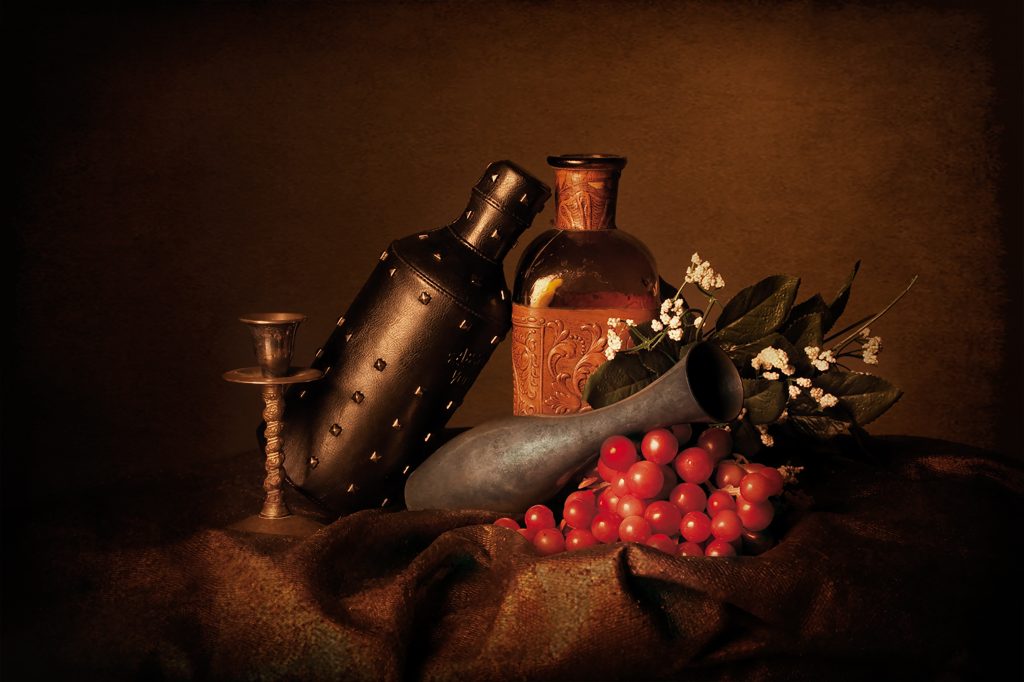Ever heard the saying, “Age like a fine wine”? Well, in this article, you’ll uncover the secrets behind that timeless adage. Welcome to “Unraveling the Mystery of Wine Aging: The Art and Science Behind It.” Here, we’ll take you on a journey through the captivating world of aged wines. Discover the chemistry behind wine aging and how it transforms flavors and aromas. Explore the evolution of primary fruit notes to secondary and tertiary flavors like cedar, leather, and truffles. Learn about the structural changes that occur, resulting in a luxurious mouthfeel. We’ll also delve into factors that influence wine aging and reveal the optimal drinking windows for different types of wines. Join us as we unlock the mystery and appreciate the beauty that time’s embrace brings to each bottle.
Contents
- The Science of Aging Wine
- Flavor Evolution in Aged Wines
- Structural Changes in Aged Wines
- Optimal Drinking Windows for Aged Wines
- The Chemistry of Wine Aging
- The Impact of Aging on Wine Characteristics
- Bottle Aging Vs. Barrel Aging
- Factors Influencing Wine Aging
- The Art and Science of Decanting Aged Wines
- The Wine Aging Process
The Science of Aging Wine
When aging wine, understanding the science behind the process is crucial for achieving optimal results. The science of aging wine encompasses several key factors that contribute to its overall quality and characteristics. One important aspect is the wine’s aging potential, which is influenced by its tannin and phenolic compound content. These compounds shape a wine’s character and contribute to its longevity.
Oxygen exposure also plays a significant role in wine aging. Controlled exposure to oxygen through the cork allows the wine to develop and enhance its aromas and complexity over time. However, excessive oxidation can have detrimental effects on the wine’s flavor and freshness.
Flavor development is another fascinating aspect of aging wine. As a wine ages, its primary flavors of fruit and floral notes transform into secondary and tertiary flavors. Aged wines often exhibit cedar, leather, tobacco, or earthy notes, which contribute to their complexity and depth. Tertiary flavors bring forth nuances of truffles, dried fruits, and nutty hints, adding further layers of flavor.
Aging also impacts the texture of the wine. Over time, the tannins in the wine soften and integrate, resulting in a smoother and more luxurious mouthfeel. Additionally, aged wines may experience changes in color intensity, losing some vibrancy but gaining elegance and clarity.
Flavor Evolution in Aged Wines
Flavor evolution in aged wines reveals a fascinating transformation of primary fruit and floral notes into secondary and tertiary flavors. It is during the aging process that these wines develop a complexity that is highly sought after by wine enthusiasts. The aging potential of different grape varieties plays a significant role in determining the flavors that will emerge over time. Red wines, in particular, benefit greatly from aging, as the tannins soften and integrate, resulting in a smoother mouthfeel and the development of flavors like cedar, leather, tobacco, and earthy undertones.
The role of oxidation in wine aging cannot be overlooked. While excessive oxidation can ruin a wine, controlled exposure to oxygen through the cork enhances the aromas and complexity of aged wines. The impact of storage conditions on wine aging is also crucial. Proper temperature, humidity, and stability are essential to slow down the aging process, allowing the wine to evolve gradually and gracefully.
The benefits of aging red wines extend beyond flavor development. The texture becomes more refined as the tannins polymerize and precipitate, creating a luxurious mouthfeel. Additionally, the color of red wines may shift from deep hues to brick-like or garnet shades, adding to the aesthetic appeal of these aged wines.
Structural Changes in Aged Wines
As you delve deeper into the world of aged wines, you’ll begin to appreciate the structural changes that occur over time, transforming a wine’s texture, mouthfeel, and overall character. Aging potential is a key factor in understanding these changes. With time, tannins soften and integrate, enhancing the wine’s texture and flavor. This results in a silkier, more luxurious mouthfeel that is often sought after in aged wines. Additionally, color changes may occur, with some wines losing intensity but gaining elegance and clarity. Aroma development is another notable transformation. Bright fruit notes evolve into complex scents like dried fruits, leather, and tobacco, adding layers of complexity to the wine’s bouquet. Lastly, tannin integration plays a crucial role in the structural changes of aged wines. Over time, tannins polymerize and precipitate, leading to a more refined texture and a harmonious balance between fruit, acidity, and tannins. These structural changes contribute to the overall evolution of aged wines, making them a delightful experience for wine enthusiasts.
Optimal Drinking Windows for Aged Wines
To determine the optimal drinking windows for aged wines, you must consider a variety of factors, including the wine’s structure, grape variety, and personal preferences. The aging process can transform a wine into a complex and harmonious masterpiece, and finding the perfect moment to uncork it is key. Here are four important considerations in determining the optimal drinking windows for aged wines:
- Storage conditions for aging wine: Proper storage conditions, such as temperature, humidity, and light exposure, are crucial for preserving the quality and aging potential of wines. Aged wines that have been stored in optimal conditions are more likely to reach their peak and provide a delightful drinking experience.
- Factors affecting the aging potential of white wines: While red wines are often associated with aging, certain white wines, such as Rieslings or white Burgundies, can also evolve beautifully over time. The grape variety, acidity, and sugar content of white wines play a significant role in their aging potential.
- The role of acidity in the aging process: Acidity acts as a preservative and can contribute to the longevity of a wine. Wines with higher acidity levels tend to age well and maintain their freshness and vibrancy over time.
- The impact of grape variety on wine aging: Different grape varieties have unique characteristics and aging potential. Some grape varieties, like Cabernet Sauvignon or Nebbiolo, have structured tannins that benefit from extended aging, while others, like Pinot Noir or Grenache, may reach their peak earlier.
The Chemistry of Wine Aging
In understanding the chemistry of wine aging, it is essential to recognize that wine is a complex solution composed of various components that interact and evolve over time. Chemical reactions play a crucial role in the aging process, particularly oxidation. As wine ages, it undergoes a slow and controlled oxidation process, which contributes to the development of desirable flavors and aromas. However, excessive oxidation can ruin the wine, highlighting the delicate balance that must be maintained.
The aging timeline of wine is influenced by several factors, including the wine storage conditions. Proper wine storage, with stable temperature and humidity levels, helps to slow down the aging process and preserve the wine’s quality. Additionally, the presence of aromatic compounds in wine contributes to its complexity as it ages. These compounds originate from grapes and yeast during fermentation and continue to evolve over time, adding layers of aroma and flavor to the wine.
Understanding the chemistry of wine aging allows for informed wine cellar management and the ability to choose the optimal time to uncork a bottle. By tracking the chemical reactions and understanding the impact of aging on wine characteristics, wine enthusiasts can appreciate the nuances and complexities that come with the passage of time.
The Impact of Aging on Wine Characteristics
When aging wine, the flavor profiles transition from bright fruit notes to complex scents like dried fruits, leather, and tobacco. The impact of aging on wine characteristics is truly remarkable, as it transforms the wine in several ways. Here are five key aspects that are influenced by aging:
- Color transition: Red wines shift from deep, vibrant hues to more subtle brick-like or garnet shades. This change in color is a visual representation of the wine’s maturation and adds to the allure of aged wines.
- Aroma development: The aromas of aged wines evolve from primary fruit notes to a complex array of secondary and tertiary scents. You’ll experience the emergence of cedar, leather, tobacco, or earthy aromas that add layers of complexity and intrigue.
- Tannin softening: As wines age, the tannins present in the wine soften and integrate, resulting in a smoother and more elegant mouthfeel. This transformation enhances the overall drinking experience and allows you to appreciate the wine’s refined structure.
- Flavor evolution: The flavor profiles of aged wines undergo a remarkable evolution. The fruit flavors transition to dried fruits, baking spices, and earthy notes. Each sip reveals a new facet of the wine’s flavor profile, showcasing its complexity and depth.
- Texture refinement: With aging, the tannins in the wine undergo polymerization and precipitation, leading to a more refined texture. The wine becomes silkier on the palate, offering a luxurious mouthfeel that enhances the overall drinking experience.
The impact of aging on wine characteristics is a testament to the art and science behind the aging process. It is truly fascinating to witness the transformation of a young wine into a mature, complex, and refined masterpiece.
Bottle Aging Vs. Barrel Aging
Compare the effects of bottle aging and barrel aging on the flavor and aroma profiles of wine. Barrel aging and bottle aging are two distinct aging techniques that contribute to the development of flavors, aromas, and texture in wine. Barrel aging occurs during the early stages of wine development, when the wine is aged in oak barrels, while bottle aging happens after the wine is sealed, allowing for a slower evolution. The use of oak barrels during barrel aging imparts flavors and aromas such as vanilla, baking spices, and caramel into the wine. On the other hand, bottle aging allows for the harmonization and integration of flavors from barrel aging, enhancing the overall complexity of the wine. To provide a visual representation of the effects of barrel aging and bottle aging on wine, refer to the table below:
| Aging Technique | Flavor Development | Aroma Profile | Aging Potential |
|---|---|---|---|
| Barrel Aging | Oak-driven flavors | Spices, vanilla, caramel | Medium to long |
| Bottle Aging | Harmonization of flavors | Enhanced complexity | Long |
Both barrel aging and bottle aging play crucial roles in the aging potential and flavor development of wine. While barrel aging contributes unique flavors, bottle aging allows for the integration and maturation of these flavors, resulting in a more complex and nuanced wine. The choice between barrel aging and bottle aging ultimately depends on the winemaker’s desired style and the characteristics of the wine being aged.
Factors Influencing Wine Aging
Understand the key factors that influence the aging process of wine. There are several factors that play a crucial role in determining the aging potential and preservation of wine. These factors include:
- Tannins: Tannins provide structure and aging potential in wine. Over time, tannins become smoother and refined, enhancing the overall texture and flavor.
- Acidity: Acidity acts as a preservative and influences the aging potential of wine. Balanced acidity ensures freshness and longevity, contributing to the overall quality of aged wines.
- Sugar content: The sugar content in wine can slow down aging reactions and help preserve the wine. Wines with higher sugar levels tend to age more slowly, allowing for a longer aging potential.
- Alcohol content: The alcohol content in wine also affects the aging rate. Wines with higher alcohol content tend to age more slowly, while lower alcohol wines may reach their peak more quickly.
Understanding these factors is essential in determining the ideal conditions for aging wine and maximizing its aging potential. By carefully considering these factors, wine enthusiasts can enjoy the complexities and nuances that come with aging wines.
The Art and Science of Decanting Aged Wines
Enhance the tasting experience of aged wines by decanting them carefully. Decanting aged wines is an art that combines scientific principles and precise techniques to ensure optimal enjoyment. The primary purpose of decanting is to separate the wine from any sediment that may have formed during the aging process. Sediment removal is crucial as it can impart unpleasant flavors and textures to the wine.
When decanting aged wines, it is important to handle the bottle with care to avoid stirring up the sediment. Begin by gently pouring the wine into a decanter, stopping when you see sediment approaching the neck of the bottle. This process requires a steady hand and a keen eye to ensure a clean transfer.
In addition to sediment removal, decanting also benefits the wine by exposing it to oxygen, which aids in the aeration process. Aeration helps release the wine’s full bouquet of aromas and flavors, enhancing the overall tasting experience. It can soften the tannins, making the wine smoother on the palate, and make the flavor profile more expressive.
The Wine Aging Process
Aging wine is a natural process that transforms the taste and aroma of the wine. It is an art and science that requires careful consideration of various factors. Here is an explanation of the wine aging process:
- Aging red wines: Red wines have the potential to age gracefully, thanks to their tannins and phenolic compounds. Over time, these compounds soften and integrate, enhancing the texture and flavor of the wine. The primary fruit flavors evolve into complex secondary and tertiary flavors, such as cedar, leather, and dried fruits.
- Aging white wines: While white wines are often enjoyed young, certain white wines like Chardonnay can benefit from aging. Aging adds layers of complexity to the flavors, and the process also softens the tannins, resulting in a smoother mouthfeel. Proper storage conditions are crucial for successfully aging white wines.
- Aging process explained: The aging process involves the interaction of various elements, including grape type, vintage, and storage method. Tannins found in grapes contribute to the structure and longevity of the wine. The wine’s flavor, aroma, and texture evolve over time, resulting in a more refined and harmonious profile.
- Aging potential of different grape varieties: Different grape varieties showcase unique flavor evolution during aging. For example, Cabernet Sauvignon may develop more earthy and savory notes, while Rieslings can transform into complex wines with honeyed and petrol aromas.
Proper wine storage is crucial for maximizing the aging potential of wines. This includes maintaining a cool temperature, stable humidity, and protecting the wine from light and vibration. By understanding the wine aging process and providing optimal storage conditions, wine enthusiasts can truly appreciate the benefits and complexities of aged wines.



